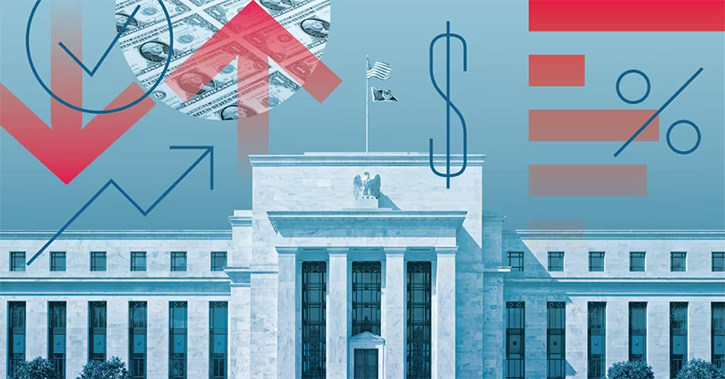Canada may be headed into a maturing market cycle, but it’s not headed for a recession.
“People are looking for a recession because we haven’t had one yet,” says Brian Belski, Chief Investment Strategist at BMO Capital Markets. But Belski says the fears may be baseless. “This is the most emotion-driven market I’ve seen in my career,” says Belski, adding that attention, due diligence and patience in the market are at an all-time low.
Volatility has returned, trade concerns with China are still lingering and corporate earnings will have a hard time keeping up with last year. But these trends didn’t result in a deterioration in underlying fundamentals, which remain quite healthy, and should drive stocks higher in 2019.
Choose your trends carefully
We did have a correction in December and earnings are slowing. And technically, recessions are supposed to happen every eight years. “But we’re not headed for catastrophe,” says Belski, “We must not confuse trends with absolutes. People out there might want to short the market, but they missed the boat,” says Belski, “The best shot at a recession we’ve had was in 2015. Didn’t happen.”
Experts argue that it’s time to invest in positive fundamentals, like the positive signals from the U.S. jobs report, and similar signals coming from Canada. We might even be headed into another ‘Goldilocks’ environment that helped spur last year’s bull run.
“The quit rate has steadily increased, but it hasn’t plateaued, which is another sign of a dynamic job market,” says Francisco Torralba, Economist for Morningstar Investment Management, “Overall, job turnover is higher than at any point since the last recession, and there are no reasons for it to be approaching a peak.”
“The [jobs] report is the best of both worlds for equity investors, as it suggests the U.S. economy continues to churn out a decent number of jobs, while wages are rising fast enough to fan spending but not inflation and interest rate hikes,” says Sal Guatieri, Senior Economist at BMO Capital Markets.
This positivity contrasts with highly publicized trends – some of which you shouldn’t track. For example, Torralba adds, the unemployment rate in the U.S. and the number of people employed part-time ticked up, but it was due to the shutdown, and thus temporary.
The bellwether of financial health
“For central bankers like me, the job market is a bellwether of financial health and a useful gauge of inflation pressures. And by many measures, the labor market in Canada is in good shape,” said Carolyn A. Wilkins, Senior Deputy Governor at the Bank of Canada in recent remarks at a Toronto Board of Trade event, “The unemployment rate is at its lowest level in records going back more than 40 years. Firms across the country tell us that it’s difficult to fill openings.”
From a wage standpoint, the jobs report was a good one, with above-expectation payrolls increases, and a strong wage growth rate, says Torralba. Wage growth has been trending up, but so has the participation rate among the prime-age group (25-54).
And wage growth is even more suppressed in Canada compared to the U.S., Guatieri adds, and so the Bank of Canada sees zero urgency to extend the tightening cycle.
In the U.S., if the trend of wage growth stays high at 3% annually, inflation expectations should probably be revised a bit higher along with the expected Fed funds rate, Torralba says. The Fed may be extremely cautious with their announcements, but he would expect the language of their next statement to signal a willingness to consider a little more tightening.
The Fed faces a paradox
At the same time, the Fed will face a paradox that might make such a move difficult to do. “A recurring question is why, given the ultra-low unemployment rate and the healthy turnover rate, wage growth is not even higher,” Torralba says.
As mentioned earlier, some trends aren’t worth watching – but others may be indirectly driving fundamentals. Take the concept of ‘churn’, or the rate which people are moving from job-to-job, for example.
An analytical note last month from Bank of Canada staffers Olena Kostyshyna and Corinne Luu notes that the relatively subdued level of churn relative to pre-crisis averages is consistent with modest slack remaining in the Canadian labour market and thus likely contributes to the moderate wage growth over the past few years.
Kostyshyna and Luu note that if people are moving into jobs that are a better match with their skills, this could boost productivity and reduce any impact on inflation.
Jobs, wages, inflation – carefully selected trends - are blending into a fundamentally bright future for investors in 2019.
Mid-single-digit earnings growth, reasonable valuations, low interest rates, solid GDP growth, and increasing dividend growth all have Belski seeing an “exquisite” environment for equity.
Belski suggests keeping an eye on communications, financials, health care, industrials and information technology in the year to come.




















